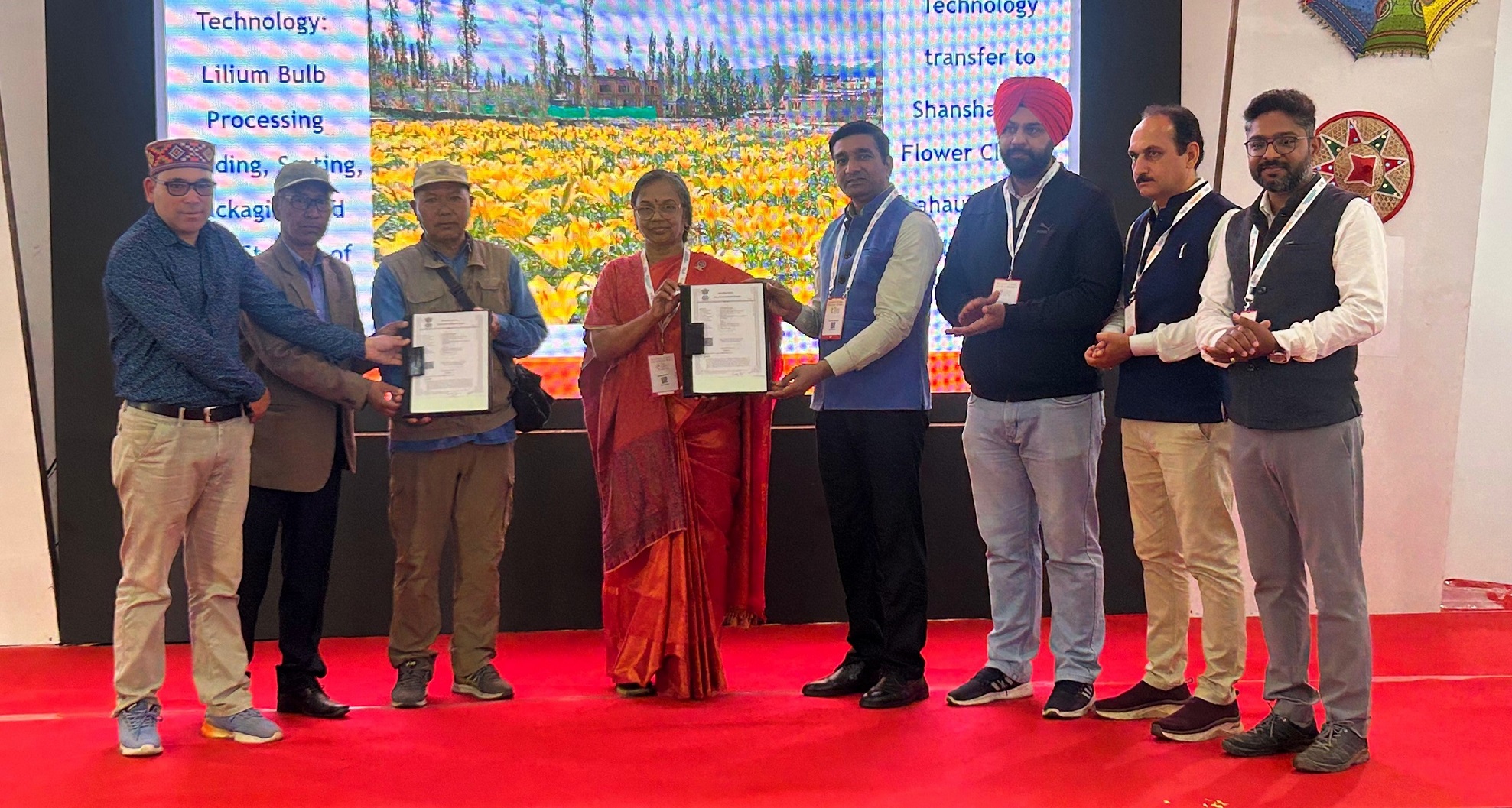The second and third days of India International Science Festival 2024 (IISF 2024) were marked by vibrant industry-academia collaboration, knowledge sharing technical sessions, and initiatives to inspire students and teachers creative, knowledge-based learning. The event also brought policymakers and scientific leaders together under one roof to discuss sustainable practices across science, agriculture, manufacturing, and healthcare.
Organised by the Council of Scientific and Industrial Research and managed by the National Institute for Interdisciplinary Science and Technology (CSIR-NIIST), Thiruvananthapuram, at IIT Guwahati, the event drew over 20,000 students, fostering innovation and interdisciplinary collaboration.
Dr. S. Somanath, Chairperson, Indian Space Research Organisation (ISRO), attended the “Student Science Interactive Program – Face to Face with New Frontiers in S&T,” where he interacted with school students, inspiring them to explore careers in science and technology and pursue innovation in the field of space research.
Speaking during the session, Dr. S. Somanath remarked, “As students, you are the torchbearers of the future in science and technology. It is essential for you to grasp the remarkable innovations and advancements taking place in these fields today. By recognising their potential and the opportunities they present, you can draw inspiration to pursue similar paths and contribute to building a brighter tomorrow. Reflecting on our current scientific and technological endeavours, your enthusiastic engagement is pivotal in realising the vision of making India a global leader.”
Another key highlight of IISF 2024 was the lab to life initiative, where CSIR signed three technology transfer Memorandums of Understanding (MoUs) to promote sustainability and technological advancements. Specifically focused on sustainable management these MoUs underscore CSIR’s commitment to leveraging science and technology for environmental preservation, enhancing industry competitiveness, and driving socio-economic development through innovative and practical solutions. These included:
CSIR-NIIST’s biodegradable cutlery technology was transferred to Devaki Engineering Enterprises, Bengaluru, featuring a Rotary Bio-Degradable Manufacturing Machine (MUSUROTO) that enhances agricultural sustainability.
CSIR-CRRI and Rajasthan Technical University partnered to advance road infrastructure R&D.
CSIR-IHBT’s Lilium Bulb Processing technology was transferred to Shansha Cut-Flower Cluster, Lahaul & Spiti, boosting the floriculture sector.
Speaking about the technology transfer, Dr. C. Anandharamakrishnan, Director, CSIR-NIIST, Thiruvananthapuram, said, “As students, you are the torchbearers of the future in science and technology. Young innovators like you have already begun building rockets and satellites in colleges, efforts that are nearing commercial success. Today, India is actively developing and launching satellites, showcasing the immense potential of this field. By understanding these advancements and the opportunities in the field of space, science, and technology offer, you can be inspired to pursue similar paths and shape a brighter future. Your active engagement is essential to making India a global leader in science and technology.”
In addition, the event featured a diverse array of engaging learning, experimental, and cultural sessions, including:
· Student Science Interactive Program – Face to Face with New Frontiers in S&T: The ongoing event aims to engage 4,500 school students with renowned Indian scientists, including Dr. S. Somanath, ISRO Chairperson, and Prof. Tessy Thomas, Former Director General of Aeronautical Systems. It seeks to inspire young minds through face-to-face Q&A sessions, introducing them to new frontiers in science and technology.
· Science Institutional Leaders Meet – Vision Sansad: The Guwahati Declaration reaffirmed India’s commitment to becoming a global manufacturing hub by 2047. It emphasised the alignment of S&T institutions’ efforts to enhance the country’s manufacturing landscape and strengthen its position in the global supply chain.
· Science through Games & Adventure – Science Safari: The event empowered science teachers from grades 5 to 12 with innovative, interactive teaching methods to make learning interactive and engaging. Through 10 technical sessions and two hands-on workshops, participants explored teaching science using games, aerodynamics, and Artificial Intelligence based kits. The initiative session aims to transform classrooms and inspire thousands of students.
· Students Science & Technology Village – The New Nalanda: This initiative engaged students with interactive exhibits, STEM challenges, and science games, highlighting S&T Hackathon entries and promoting problem-solving, especially for students from the North East and border districts.
Ideas for Viksit Bharat – S&T Hackathon: The event engaged 400 students to develop innovative solutions aligned with Viksit Bharat. After state-level screening, 100 ideas reached the finals, including 20-25 from the Northeast. Ten finalists will receive prizes, and all ideas will be considered for implementation or internships, promoting innovation and practical solutions to scientific challenges.
· The Gurukula – Aspiring Educators and Teachers Workshop: This program empowered 150 science teachers with innovative teaching tools, hands-on experiments, and modern pedagogical techniques. With 50% participation from the Northeast, it focused on inspiring the next generation of educators and scientists.
· Science Odyssey of the North East India: Focused S&T for the North East India: This program focused on the region’s unique challenges with talks, S&T advancements, and an exhibition of regional activities. With 250 participants, it aimed to promote inclusive development through tailored S&T solution.
· Science, Technology, Communication, and Media Conclave: The conclave emphasised the media’s role in bridging science and society. Dignitaries highlighted the importance of effective communication to promote India as a global leader in science. The event featured the release of Employment News and Science India Magazine, with sessions on enhancing science communication.
· Vigyanika – Science Literature Festival: Themed “From Folklore to Future,” highlighted the role of Indian languages in science communication. The event featured sessions on traditional and modern science communication, Indian knowledge systems, and interactive approaches. A panel discussed promoting science in Indian languages, and a workshop offered practical insights into popular science writing.
· New Frontiers in S&T for Viksit Bharat @2047 – Pragya Bharat: The event showcased India’s quantum computing roadmap under the National Quantum Mission (NQM). Key advancements, like the 114-qubit experiment, and applications in healthcare, energy, and infrastructure were discussed, with a focus on collaboration to position India as a quantum leader by 2047,among others.
These varied programs showcased IISF 2024’s contribution to advancing science, technology, and innovation for a self-reliant India, while also motivating the next generation of scientists and innovators.

